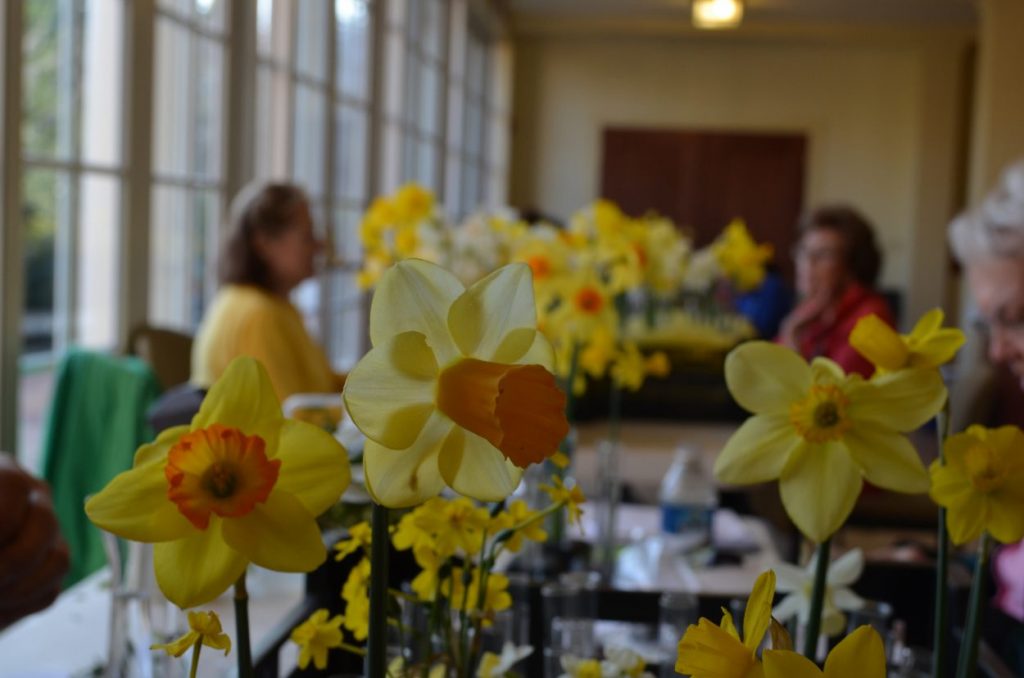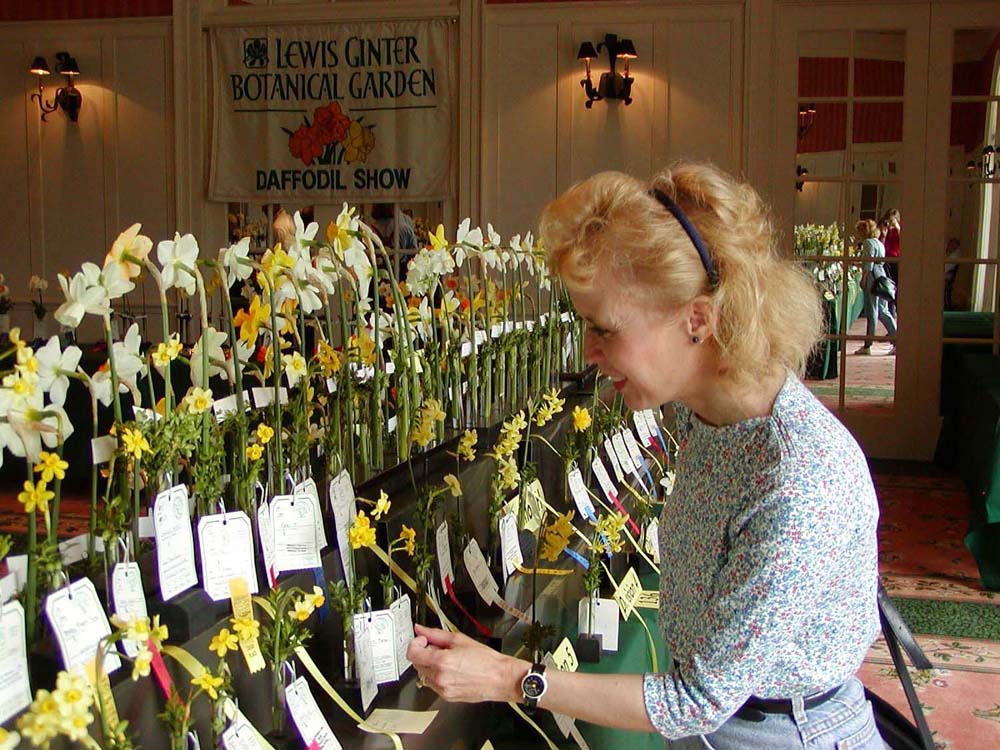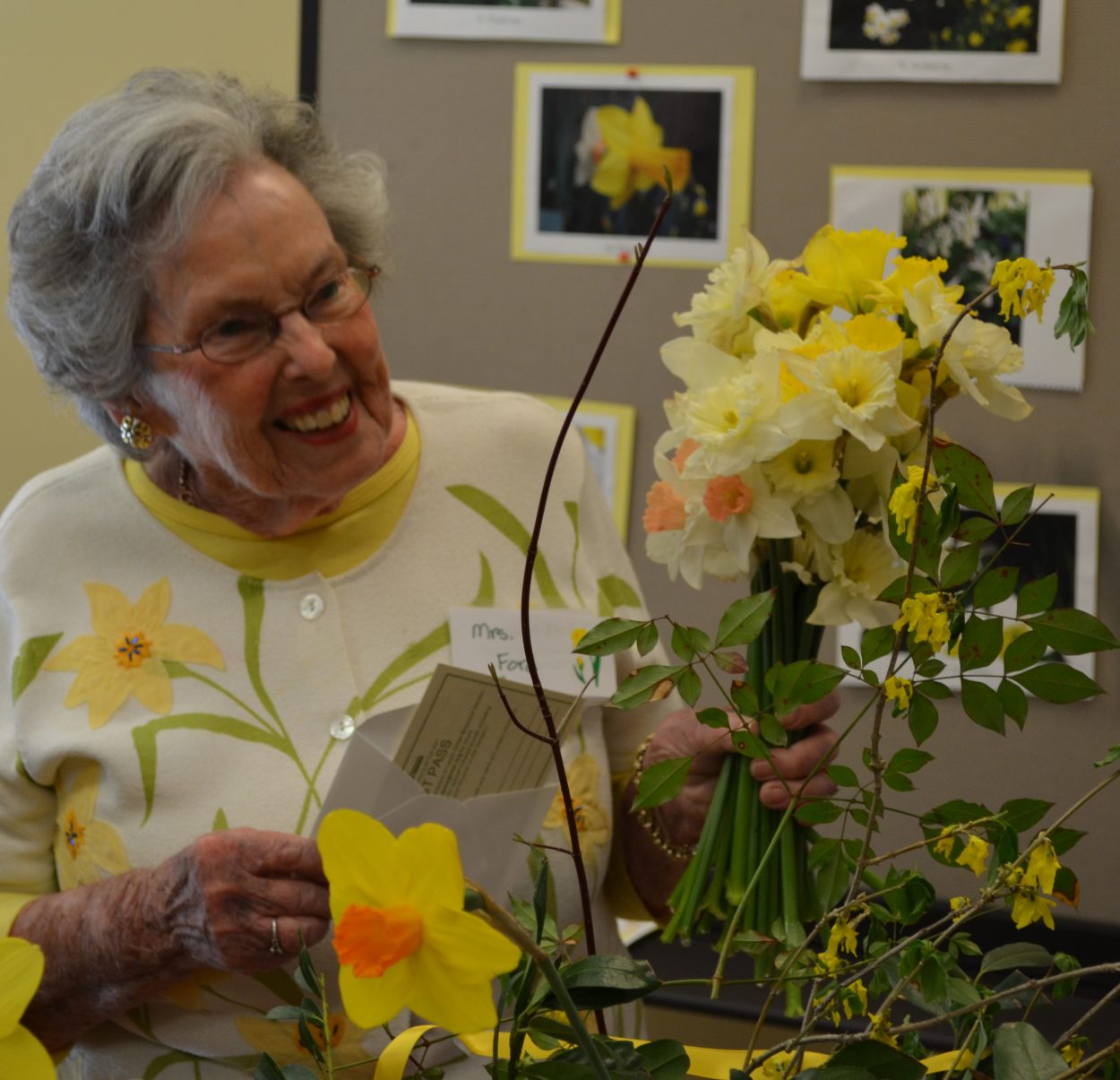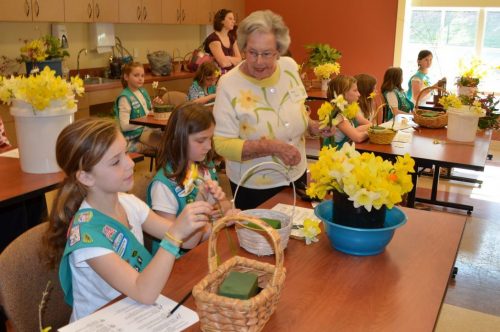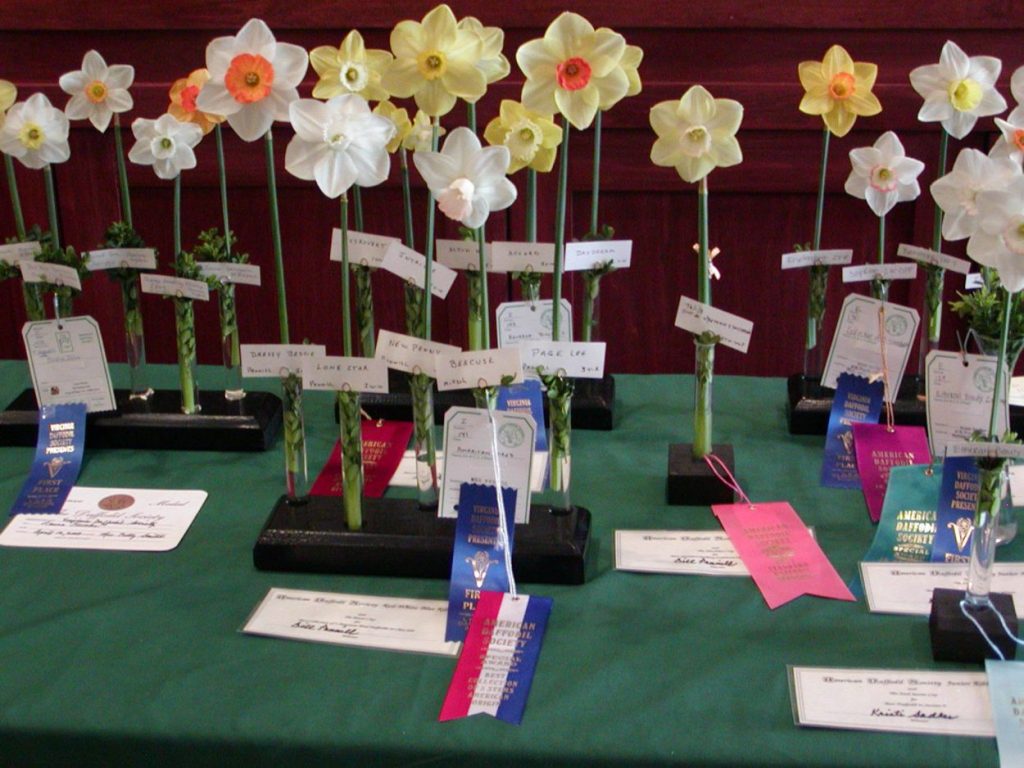Flower Shows are a Rite of Spring at Lewis Ginter
Updated 2/10/22
I still remember my first flower show. It was in 1997, and my husband pointed out that the newly opened Robins Visitor Center at Lewis Ginter Botanical Garden was featuring a daffodil show. He wanted to see the new building, and I was curious, so off we went.
The show was a revelation! Rows and rows of daffodils — but: were these daffodils? Our cheery yellow heralds of spring? The flower show had blooms in every shade from pale white to salmon to the familiar yellow, all the way to bold orange. There were big ones, small ones and stems with multiple blooms. Petals radiating around cups (called trumpets), petals flexed backward, tall cups, flat cups, short cups, ruffled cups. Hundreds of them! Who knew?
Five years later, I found myself working at the Garden, and in the inevitable “other duties as assigned” category, was given the coordination of flower shows at the Garden. Now I got to understand from the organizational side how these displays worked.
When I met the leadership of the Virginia Daffodil Society, the presenters of the flower show I just described, I was amazed at the detail involved in the daffodil show. Categories were meticulously marked out on long risers, according to a multi-page booklet. Exhibitors brought in hundreds of entries freshly picked from their gardens to stage for judging in special props. Judges trained in the minutiae of perfect form and color examined hundreds of entries. Mind you, this was before the ability to instantly look up blooms in online catalogs, and daffodils alone have 2,500 known cultivars. That’s “known.” There could be more! Some blooms were unidentifiable and made their way out of competition to a “what is it?” table.
Long-time Daffodil Society member Margaret Ford, now sadly passed away, participated with her husband Skip and family members in every Virginia Daffodil Society Show at the Garden since 1993. In 2017, she commented on what was the fascination with growing and showing these plants.
“I got involved with the Garden through Frank Robinson and was asked to host a tea party at the 1993 show for the judges and other visitors. In those days, the show was at the Arthur Ashe Center. Well, we felt we ought to enter something, so I picked one lone bloom from our yard and entered it.
The tea party went well, and I went home exhausted! Later that day, Frank called, and that one little bloom we had picked as an afterthought won “Best in Show” from among 1600 entries! So, of course, we were hooked, and have grown daffodils ever since. Our children and grandchildren all grow daffodils–it’s been a great family activity. One of our granddaughters turned into an enthusiastic, award-winning grower. Our great-granddaughter was just born–and I gave her a dress with a yellow flower on it–start ’em young!” Ford adds: “We continue to participate because we feel these shows provide important education to the public. The enthusiasm of the growers is wonderful, and it puts us together with like-minded people. Plus, the sheer beauty of the flowers is inspirational.” Ford hosts a flower-arranging activity with middle school children the Friday before each show even though she and her husband Skip are “retired” from the competition.
I learned that most flowering plants have national societies that bring together like-minded growers and amateurs to study, grow, and share their experiences with their favorite plants. And these societies have state and local chapters. They are all-volunteer groups, and the coordination and planning of these shows are amazing. One of the largest programs of these shows is at the Chicago Botanic Garden,
which has its own plant show pavilion, and a year-round schedule of shows, from African violets to lilies.
Stephanie Lindemann, who manages the American Flower Show Series, says, “Originally when the [Chicago] Botanic Garden was first formed, plant shows were the public end of how people connected to the garden. Plus, they are connected to our mission, cool innovation often happens within these groups, and they promote conservation through awareness.”
I found out that plant societies and their plant shows, where enthusiasts trade tips on growing their favorites and show off their prize specimens, go back more than 100 years in this country, and earlier in Europe. The earliest show was the annual Philadelphia Flower Show, organized in 1829 by the Pennsylvania Horticultural Society, soon after the PHS was formed in 1827. Now, there’s a plant society for nearly every type of bloom.
At a plant show, blooms (or plants) are judged by standards developed by the national group for the plant. Guidelines are published for shows—including definitions of “classes,” or types, and precise descriptions of the ideal, perfect color and form for each cultivar—a lot like the standards used for dog shows. If your bloom doesn’t meet the standard—no prize for you!
Lewis Ginter Botanical Garden hosts the Virginia Daffodil Society Show, Richmond African Violet Society Show & Sale, Richmond Rose Society Show and Richmond Area Daylily Society Show and Sale.
Virginia Daffodil Society Show, the Richmond African Violet Society Show and Sale, the Richmond Rose Society Show, and the Richmond Area Daylily Society Show and Sale. In 2022, we are also hosting the Virginia Orchid Society Show and Sale for the first time.
Enthusiastic hobbyists complement the work of professional horticulturists. Many also cultivate varieties not commonly seen in retail stores, so heirloom varieties are continued, or new cultivars are discovered. Societies meet regularly and welcome curious newbies.
At the Garden, knowledgeable volunteers complement the work of our horticulturists. For example, magnolia hybrids produced by longtime volunteer the late Bill Smith are growing on in a trial bed. One of his crosses, “Ginter Spicy White,” has been released to the trade.
Stop by one of the shows at the Garden or elsewhere and discover the variety you may never have seen.
Virginia Daffodil Society Show
